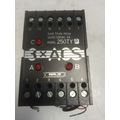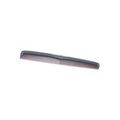Bishop Rock Lighthouse, Scilly Isles - RP postcard by Gibson - St Marys pmk 1945
- Condition : Used
- Dispatch : 2 Days
- Brand : None
- ID# : 210444045
- Quantity : 1 item
- Views : 100
- Location : United Kingdom

- Seller : justthebook (+1703)
- Barcode : None
- Start : Thu 01 Sep 2022 11:38:56 (BST)
- Close : Run Until Sold
- Remain : Run Until Sold
More Listings from This Seller view all
Seller's Description
- Postcard
- Picture / Image: Bishop [Rock] Lighthouse, Scilly
- Publisher: FE Gibson
- Postally used: yes
- Stamp: George V 2d orange
- Postmark(s): St. Marys 1945 cds
- Sent to: Mr & Mrs L. Carbines, Lighthouse Hill, Portreath, Redruth, Cornwall
- Notes / condition: has some album adherence to left hand side on the back (see scan)
Please ask if you need any other information and I will do the best I can to answer.
Image may be low res for illustrative purposes - if you need a higher definition image then please contact me and I may be able to send one. No cards have been trimmed (unless stated).
------------------------------------------------
Postage & Packing:
Postage and packing charge should be showing for your location (contact if not sure).
No additional charges for more than one postcard. You can buy as many postcards from me as you like and you will just pay the fee above once. Please wait for combined invoice. (If buying postcards with other things such as books, please contact or wait for invoice before paying).
Payment Methods:
UK - PayPal, Cheque (from UK bank) or postal order
Outside UK: PayPal ONLY (unless otherwise stated) please. NO non-UK currency checks or money orders (sorry).
NOTE: All postcards are sent in brand new stiffened envelopes which I have bought for the task. These are specially made to protect postcards and you may be able to re-use them. In addition there are other costs to sending so the above charge is not just for the stamp!
I will give a full refund if you are not fully satisfied with the postcard.
----------------------------------------------
Text from the free encyclopedia WIKIPEDIA may appear below to give a little background information (internal links may not work) :
*************
The Bishop Rock (Cornish: Men Epskop)[1] is a very small islet in the Atlantic Ocean known for its lighthouse. It is in the westernmost part of the Isles of Scilly, an archipelago 45 km (28 mi) off the southwestern tip of the Cornish peninsula of Great Britain. The Guinness Book of Records lists it as the world's smallest island with a building on it.[2]
The original iron lighthouse was begun in 1847 but was washed away before it could be completed. The present building was completed in 1858 and was first lit on 1 September that year. Before the installation of the helipad, visitors to the lighthouse would rappel from the top (with winches installed at the lamp level and at the base below) to boats waiting away from the lighthouse.[3]
Bishop Rock is also at the eastern end of the North Atlantic shipping route used by ocean liners in the first half of the 20th century; the western end being the entrance to Lower New York Bay. This was the route that ocean liners took when competing for the Transatlantic speed record, known as the Blue Riband.
An 1818 Report by the Surveyor–General of the Duchy of Cornwall on the dangers to shipping in Cornwall proposed that a lighthouse be built, similar to the Eddystone Lighthouse, upon Bishop Rock, given its location as the westernmost rock of the Isles of Scilly. The plan was considered by the Government and building was expected soon, as the engineer John Rennie the Elder made an offer to build it.[10] The Government did not take up the offer, but Trinity House surveyed Bishop Rock in 1843, with a view to building a lighthouse, and work began in 1847.[11] The engineer in chief, James Walker, decided on a 120-foot-tall (37 m) design consisting of accommodation and a light on top of iron legs.[11] The light was never lit, since on 5 February 1850 a storm washed the tower away.[11]
In the second attempt, James Walker began building a stone structure in 1851.[11] The site presented a number of difficulties: the paucity of available land area and the slope of the rock meant that the lowest stone had to be laid below the low water level of the lowest spring tides.[12] The resident engineer was Nicholas Douglass assisted by first James and then William his sons. Despite multiple problems, the tower was completed without loss of life. It was fitted with a large (first order) fixed catadioptric optic by Henry Lépaute,[13] and shone its light for the first time on 1 September 1858.[12] The total cost of the lighthouse was £34,559.[12]
Faced with the full force of the Atlantic, however, the building proved vulnerable: in heavy weather the tower regularly shook, the vibrations being powerful enough to cause objects to fall from shelves, and even causing the optical apparatus to fracture.[14] The lighthouse had initially been provided with a 3 cwt fog bell; however this was washed away during a storm in January 1860. (It was replaced with a larger bell, but not until 1864;[15] the bell was sounded once every ten seconds).[16]
Renovation
In 1881, various other expediencies having been tried in the meantime, Sir James Nicholas Douglass inspected the tower and designed a renovation to reinforce the structure by laying massive granite blocks into the rock and dove-tailing them onto the lighthouse.[17] The renovations increased its height by 40 feet (12 m). The work began in 1882 and completed in 1887, under the supervision of Douglass's eldest surviving son, William Tregarthen Douglass.
The new improved light had a range of 181⁄4 nautical miles.[18] The optic was designed and built by Chance Brothers and was 'biform' (having two identical lamps and lens arrays, one mounted above the other).[19] Each tier consisted of an eight-wick paraffin burner set within a revolving array of extra large hyperradiant Fresnel lenses (consisting, on each level, of five pairs of lens panels, displaying two white flashes every minute). In clear weather the lower tier alone was used, with its lamp on half power; in limited visibility (as judged by the clarity of the light visible from St Agnes's Lighthouse, 5 nmi (9.3 km; 5.8 mi) away) both tiers were used with the lamps at full power.[14]
The heavy optic was turned by a small air engine placed in the pedestal; compressed air was provided from a set of tanks, located in the room below along with a pair of Davey 'Safety' Engines, which drove the compressors.[14] The compressed air could also be used, by day, to drive a small gallery-mounted winch for landing stores.
As part of the renovation, the lighthouse was equipped with an explosive fog signal: in foggy weather the keepers regularly had to attach a guncotton charge together with a detonator to a jib-type apparatus on the lantern gallery; from inside the lantern they would then raise the jib and fire the charge electrically.[15] The explosive signal remained in use until 1976.
Listing Information
| Listing Type | Gallery Listing |
| Listing ID# | 210444045 |
| Start Time | Thu 01 Sep 2022 11:38:56 (BST) |
| Close Time | Run Until Sold |
| Starting Bid | Fixed Price (no bidding) |
| Item Condition | Used |
| Bids | 0 |
| Views | 100 |
| Dispatch Time | 2 Days |
| Quantity | 1 |
| Location | United Kingdom |
| Auto Extend | No |




 for 1 item(s)
for 1 item(s)
















